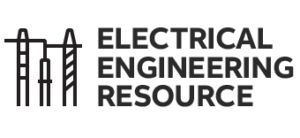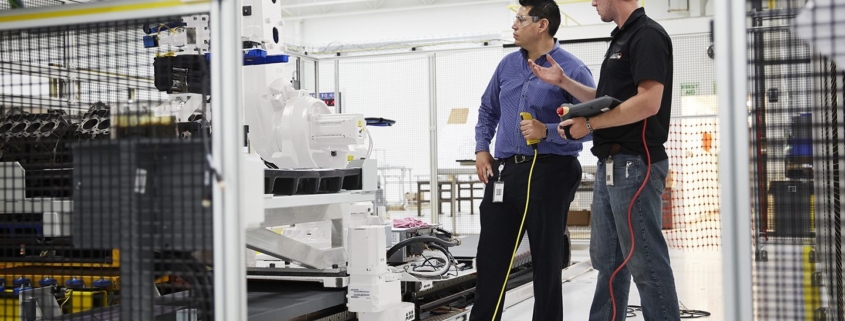4 Benefits of Safety PLCs
In many applications, Safety PLCs can not only help ensure required safety levels but also provide process control. Panels using only a Safety PLC can be smaller and simpler, and help panel builders keep their costs lower.
Safety PLCs started being used in control panels about 20 or so years ago. Prior to that, this as-yet- unproven technology wasn’t fully trusted to keep machine operators safe. As the potential benefits became more apparent, standards organizations stepped in to test and validate their safety and reliability, encouraging rapidly growing acceptance. Most of today’s Safety PLCs meet multiple international standards like IEC 61508, ISO13849, and UL certification as well as being third-party approved by organizations such as TÜV Rheinland. Many panel builders today confidently include Safety PLCs in their panel designs.
How do Standard PLCs differ from their Safety PLC counterparts? The fundamental difference is that many Standard PLCs provide only non-safety control logic for a machine. By contrast a stand-alone Safety PLC can manage (some) control logic along with the safety systems. In many cases, a control PLC along with a separate Safety PLC will give you a “best practice” solution.
Safety PLCs have internal, diverse, redundant processors that cross check all safety functions. If there is a mismatch, the system is designed to catch it and shut down the machine safely. The two internal processors of the Safety PLC are tightly integrated, with data shared between them providing enhanced machine operation, diagnostics, and safety.
Still, some builders and buyers remain hesitant to rely on Safety PLCs. In some cases, their hesitance makes sense based on the application/economic requirements. But where the requirements match Safety PLC capabilities, panel builders can reap four big benefits by designing them in.
1. Simplicity
Whether compared to a two-PLC (Standard and Safety) design or a design that relies on relays, using a Safety PLC means fewer components and, therefore, less wiring. Safety devices in a traditional dual-channel design utilize four conductors. Instead, some Safety PLCs take advantage of technology that enables up to 10 devices, each using only two conductors for the safety signal, to be connected in series to a single input. This basically cuts in half the number of inputs required on the safety PLC and also typically raises the level of safety.
As more devices become “Safety PLC friendly,” safety-related processes are simplified. Drives, for example, typically required a multi-step procedure to shut down safely. Today, many drives offer a safe-torque-off (STO) feature, reducing the components needed.
The requirements for a machine’s safety are defined by a risk assessment that determines the required performance level (PL, rated from A to E) for each safety circuit (safety chain).
When implementing the safety solution, a calculation is required. That calculation looks at the input, logic, and output on the machine. The performance level for the safety chain should be equal to or greater than the required performance level determined by the risk assessment of the machine.
Many Safety PLCs have pre-calculated values (such as mean time to dangerous failure or MTTFd and others) that are used to help calculate the performance level for each safety chain.
The simplicity of a Safety PLC also delivers benefits to the customer in the form of both increased reliability and faster troubleshooting. Many Safety PLCs are capable of being connected to an HMI (Human Machine Interface) that displays the state of all safety devices on the machine. This will aid in the ability to pinpoint the device causing the issue, reducing troubleshooting and downtime.
Programming a Safety PLC has become much easier over time with pre-designed, third-party-approved function blocks. The function blocks are basically virtual safety relays that allow relay logic to be done in software instead of hardwiring.
2. Space
The reduced components and simplified wiring drive the three remaining benefits of Safety PLCs, beginning with space. Compared to using safety relays, the Safety PLC delivers a tremendous reduction in component count and wiring, and therefore, reducing panel space. In applications where a Safety PLC can also be used for basic process control, the reduction in space is even more impressive.
3. Speed
Fewer components mean less time-consuming wiring. A component that requires only two safety signal wires, instead of the traditional four, cuts wiring time in half. An added benefit is more reliable panels, since there are fewer connections and, therefore, a reduction in the possibility of miswiring. And modifications can be done with a quick program change rather than adding components or modifying wiring.
4. Cost
While the upfront cost of a safety PLC is higher when compared to using safety relays, the cost advantage of a Safety PLC is typically realized in systems requiring more than five relays.
Reduced space, wiring, and components decrease the price of a panel. Even the Safety PLC code created could be reused in some cases for like-style panels. Then the cost benefit of Safety PLCs quickly becomes obvious.
Standalone Safety PLCs are the clear choice for many machines
There are clear benefits to using a Safety PLC instead of safety relays for safety functions, but that doesn’t mean it is always the right choice. A good rule of thumb is that with applications where safety requirements are relatively simple and would require five or less relays, a Safety PLC would be overkill. A simple estop chain and gate switches, for example, don’t warrant the higher cost of a Safety PLC.
But as the number of safety functions grows, a Safety PLC increasingly makes sense. In addition, many of the stand-alone safety PLCs cost less money than the Safety/Control PLCs on the market today. To determine the best solution, you must keep in mind the application your machine is designed for and the risk assessment performance levels of the machine.
Deciding whether you can rely on a Safety PLC for both safety system and process control also depends on the complexity of the machine or process. For basic process control, a single Safety PLC can often handle the job.
In applications where a Safety PLC can manage both safety systems and machine operation, opting for the Safety PLC provides greater simplicity and more compact, affordable panels, giving panel builders a cost advantage.
—
Darrell Burkeen
Certified Machinery Safety Expert
(TÜV Nord)
ABB Electrification – Smart Power
Jeff Leslie
Certified Machinery Safety Expert
(TÜV Nord)
ABB Electrification – Smart Power




